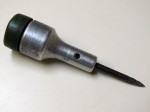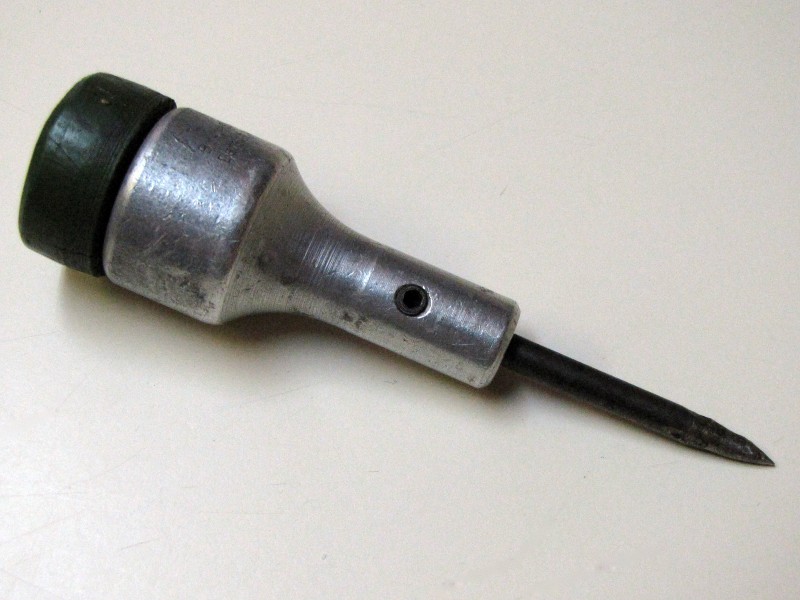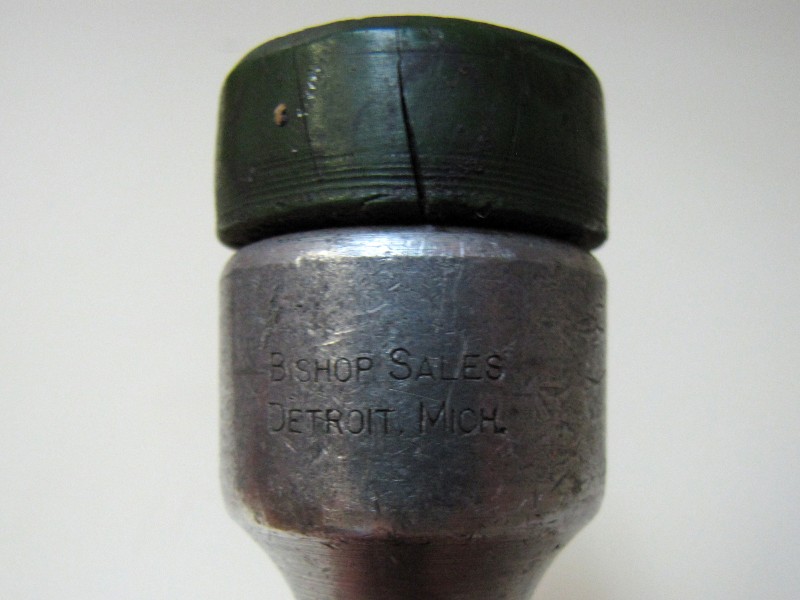The first car I remember my parents owning was a 1977 Chevrolet station wagon—blue, with fake wood paneling on the sides. A few months after buying the car, Dad reports, something within the passenger-side rear compartment wall, near the spare tire stowage, began to rattle. Soon, the noise irritated him enough that he disassembled the interior paneling to find and silence it.
Which is where he discovered this tool, a hand awl, presumably lost or abandoned there by an upholstery installer on the assembly line. Dad, who has never been a big fan of organized labor, at least once advocated the latter theory, i.e. that the awl was abandoned in the car, on purpose, by a worker exploiting union regs to the effect that he or she could not be required to work unless provided with the correct tool. Being considerably more liberal, I am prepared to give that long-ago UAW member the benefit of the doubt and believe it was walled up by accident.
Dad put the awl in the top drawer of his toolbox and it’s lived there ever since, though the car it came in is now thirty years gone. It’s heavy, solid, and quite well made, with a turned aluminum handle and replaceable pommel- and tip-fittings. I used it just today.



One of my uncles restored a classic British MGB, and while attending a gathering of MG owners he met a former employee of the company. The fellow told him that during one particularly acrimonious union dispute, workers took to throwing extra bolts inside the frames of the cars. This apparently explains many mysterious rattling noises in those vehicles. MGs are notoriously unreliable, of course, but apparently at least some of their flaws were deliberate.
A lost awl, however, seems much more likely to be an accident. Even the MG guys didn’t throw useful tools away.